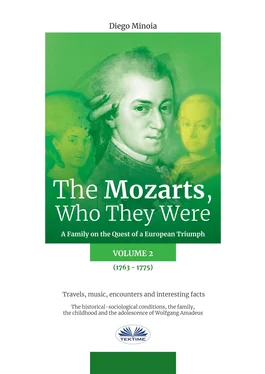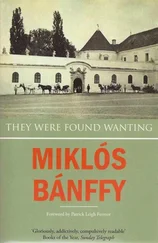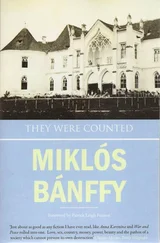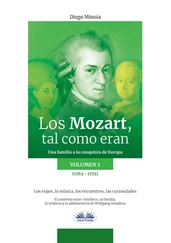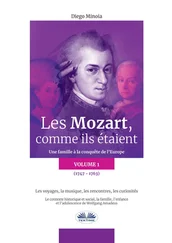Love and sex are talked about and practiced throughout Europe but especially in Paris and Venice, the only city that, despite the ongoing decline of its power, could compete for the "dolce vita" with the French capital.
The search for pleasure as an end to itself became, first in the aristocratic world, but soon also in the bourgeois sections of the population, a way of thinking and living that for some even became an obsession.
To love, even outside of marriage (with discretion but without false modesty) became normal, as well as leaving without too many sorrows in view of a new "game" that led to other conquests.
Sex became an experience, for men and women (despite the permanent situation of social minority with respect to man), an achievement to be enumerated and cataloged (think of Mozart's Don Giovanni and his catalog, the perfect representative of that world that was about to disappear end of the century).
The 18 thcentury is the century of seducers and libertines: Casanova (who in his biography lists 147 conquests) and the Marquis de Sade are perhaps the champions, and such have remained in the collective imagination.
The nobles, however, had to begin to suffer from the competition of new "objects of desire": the artists. In a historical moment that, if it does not invent the star-system at least consolidates it, actors and actresses, singers and dancers represent the "forbidden fruit" that attracted the desires of husbands and wives, eager to try new thrills.
However, it was always a question of whims and desires that were exhausted in the time span of a strong but not lasting passion fire or in menage in which the rich party financed the lover by offering a standard of living that could be "respectable".
Artists were rarely considered worthy to officially enter the blue blood pedigree.
Sex, in the century of the Mozarts, could be pure pleasure or a means for the conquest of money, power and positions kindly favored by those who, man or woman, have pleasantly enjoyed the relationship.
Certainly neither Leopold nor Wolfgang belonged to the category of careerists between the sheets: the marriage of the former was happy but certainly did not give him wealth or social advancements, that of the latter then, with the insipid Constanze (imposed on him by the crafty Mrs. Weber, who had finally managed to place even the least attractive of the three daughters) it was an obligatory choice.
As for dissolute conduct, on the other hand, Amadeus was not one to hold back, at least from the moment he found himself at his disposal far from his father's control. The affair with his cousin and the Viennese adventures with students and actresses of his plays are part of the often obscured story of his life.
In the 18 thcentury the rich and powerful enjoyed, even in a non-figurative sense, their position of power which allowed them to dispense money and offices to their lovers; the latter having no problem moving from bed to tax collector's office or royal official.
If you were male you made a career for yourself, if you were female you used the influence obtained between the sheets to consolidate your role and to help relatives and friends by supporting their requests.
A single example, which circulated in Parisian salons at the time of Louis XV, can be illuminating. A Countess, who had already given up her arms in a singular encounter with the King, wrote him a letter (found by the monarch's servant by chance and delivered to Madame de Pompadour, the official lover) in which she asked him for 50,000 crowns, the command of a regiment for a relative of his, a bishopric for another relative ... and the liquidation of the Pompadour (which he evidently aspired to replace).
The wealthy aristocrats, when they were an "unfulfilled desire" for some girls and did not want to waste time intervening directly in the seductive game, hired a trusted valet, acting as a pimp, who lent himself to act as an intermediary and organize meetings (sometimes personally exploiting that particular role of power towards the bridesmaids, who did not refuse for fear of missing the greatest opportunity).
The practice of having lovers, moreover, came from high above. Louis XIV, the Sun King, had a disproportionate number of lovers of which about thirty "officers"; his successor Philip d'Orleans (regent until the coming of age of the future Louis XV) had two official lovers who worked simultaneously and without jealousy or reciprocal inhibition or for the countless meteors that quickly passed between the curtains of the royal bridal bed; Louis XV could count on about fifteen recognized lovers, plus the passing ones. And don't think that the High Clergy did no less.
For Carnival in every corner of the city there were dances, often with just a couple of musicians playing, according to Leopold, old out-of-date minuets. Approaching the time of departure for London Leopold is also thinking of relieving part of the gifts and purchases made in the previous stages of the journey by sending them to Salzburg and at the same time avoiding possible thefts or breakages due to the next loads and unloadings from the carriage with relative move to the inns.
A novelty that caused a sensation on Leopold were the so-called "English toilets" which in Paris were present in every private aristocratic palace. These are actually the first bidet models, equipped with cold and hot water sprayed upwards, which Leopold describes very briefly, not wanting to use inelegant terms. Even the bathrooms of the noble palaces are luxurious, with walls and floors in majolica, marble or even alabaster, equipped with porcelain chamber pots with gilded rims and jars with scented water and fragrant herbs.
Personal hygiene and bodily needs
We have previously seen how the use of terms related to bodily functions and the parts of the body involved was common in the Mozart family, in particular in the habits of Wolfgang and his mother.
But it is nothing to be shocked by!
At the time in Salzburg, but also in the rest of Europe, if we exclude the aristocracy (who lingered a little longer in the language to respect the alleged superiority over the lower classes) the use of trivial language was common.
After all, the habit with the natural functions of the body was much more "public" than it is today.
The bathrooms were practically absent in the vast majority of houses, if we exclude the noble palaces, and the bodily functions were not hidden as today but quietly carried out wherever nature had made its needs felt.
How to consider defecation a vulgar activity to be hidden at the time of the Sun King (Louis XIV) when it was actually considered a privilege reserved for the highest degrees of the court nobility to attend the "lever du Roi", the awakening of the King, including him sitting on the "throne" (equipped with a majolica vase and a table for reading and writing) that the sovereign used every morning to carry out his bodily needs?
And so, cascading from the King down, the activities of the body were considered natural and were carried out, if one was at home, in the chamber pot which was then emptied by throwing its contents out of the window.
The result of all this, added to the animal manure and the habit of throwing all kinds of garbage or processing waste on the street (there were no sewers or sanitation systems, except for some rare washing of the main and central streets of the cities ) was filthy streets and putrid cities.
If, on the other hand, you were out of the house, things got more complicated, not so much for the men who, thanks to the more practical clothes and the favorable physiology were able to find a secluded corner to relieve themselves, as well as for the women.
The aristocrats wore complex and overabundant dresses, with skirts, petticoats, bodices with strings and buttons, not to mention the "panier", a frame with concentric circles in wicker or whalebone, tied together by ribbons and fixed directly on the corset . How then?
Читать дальше
